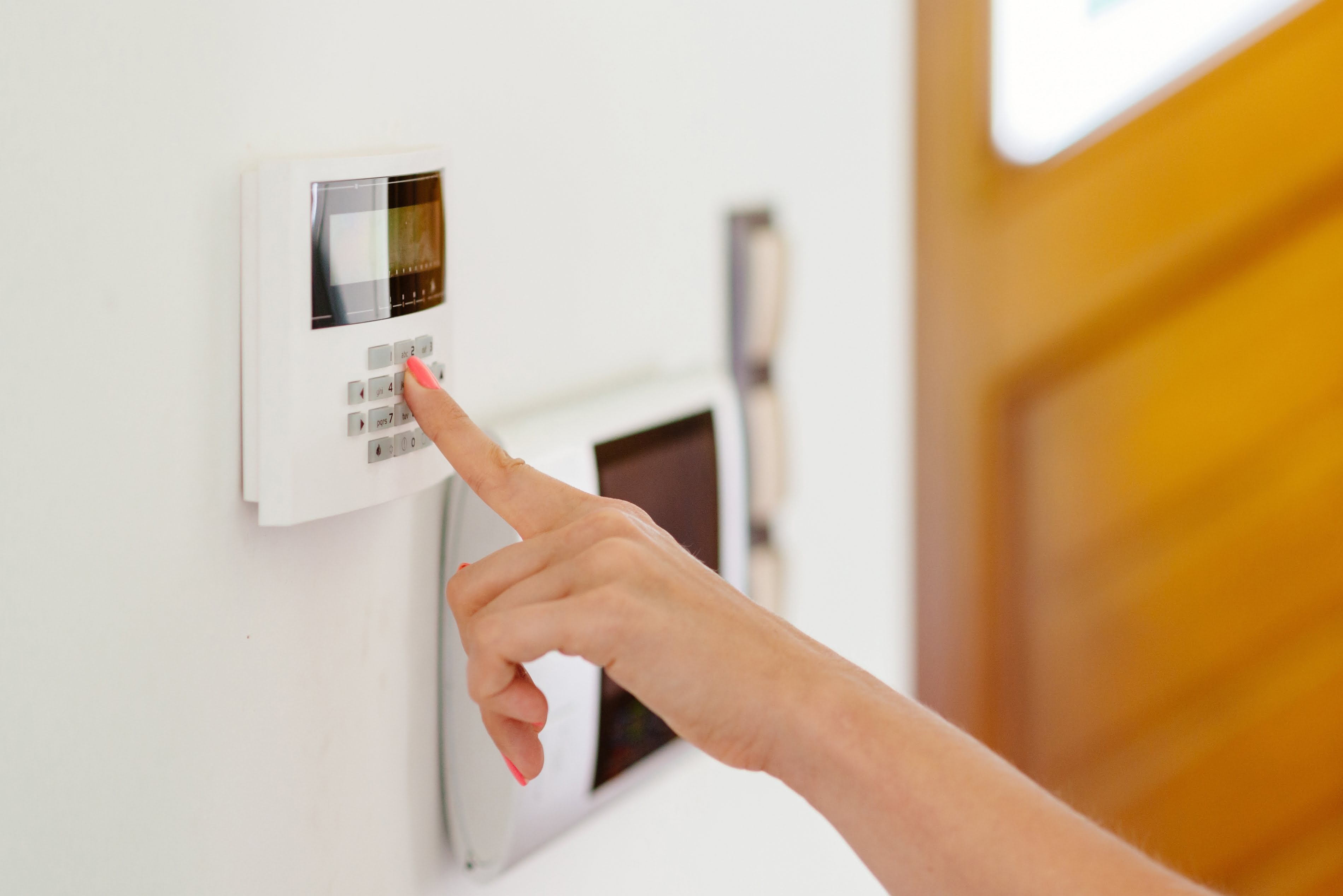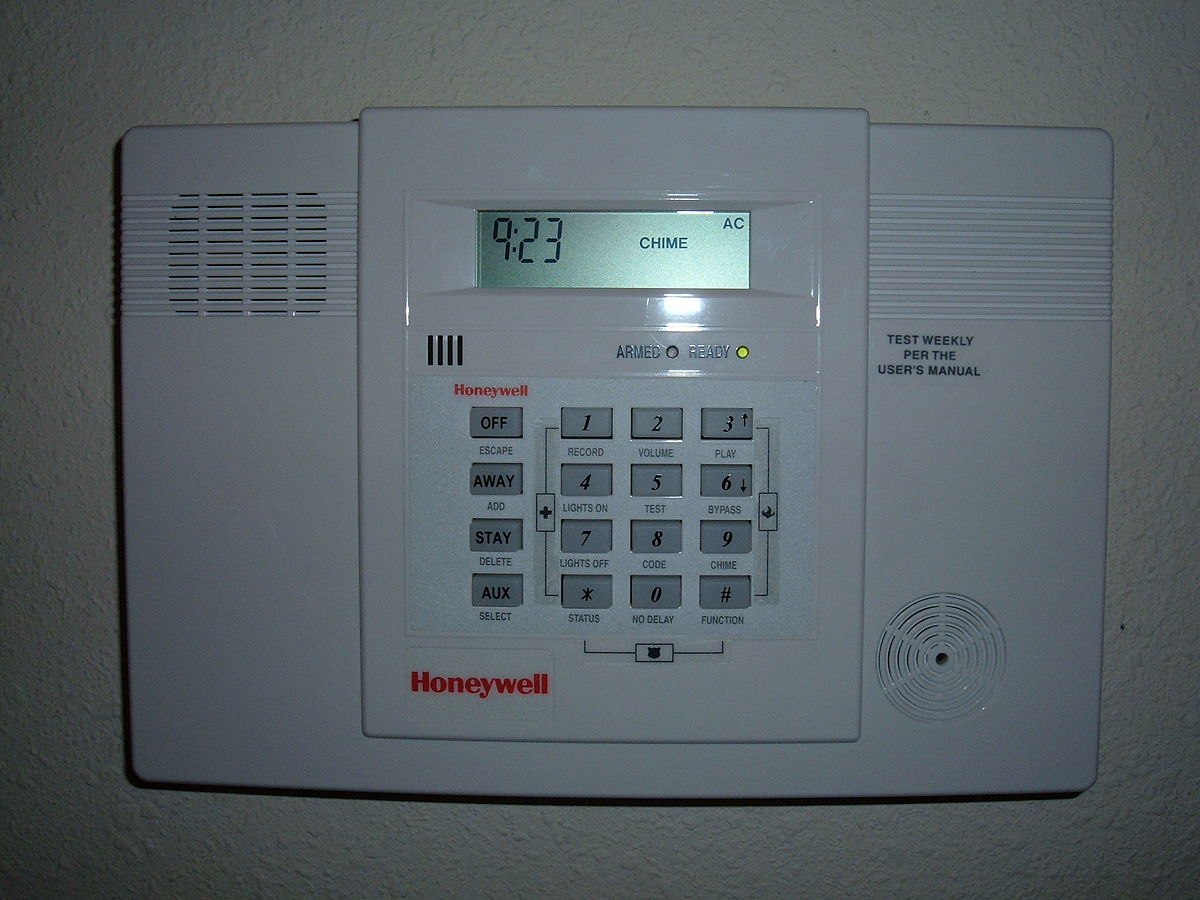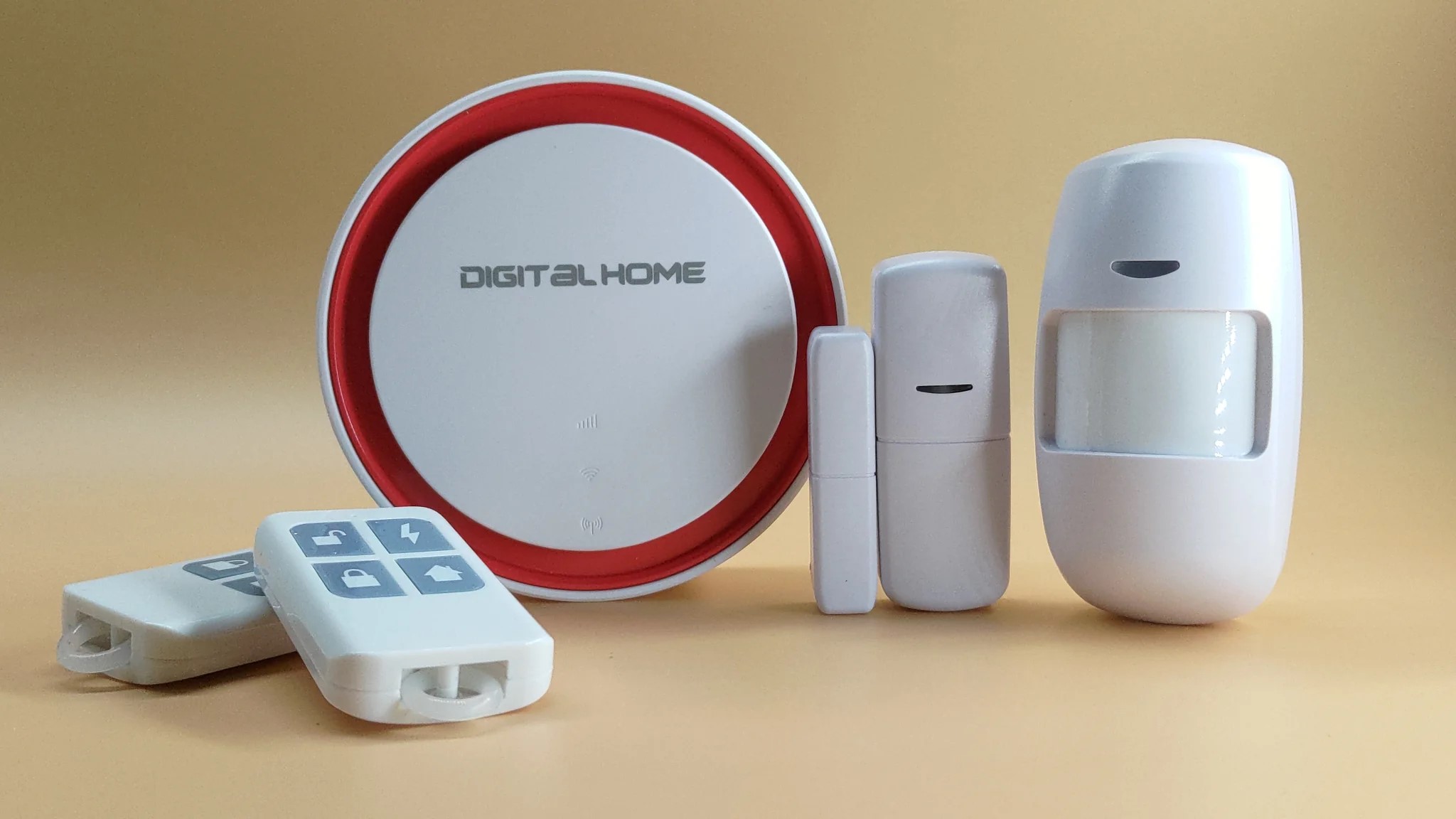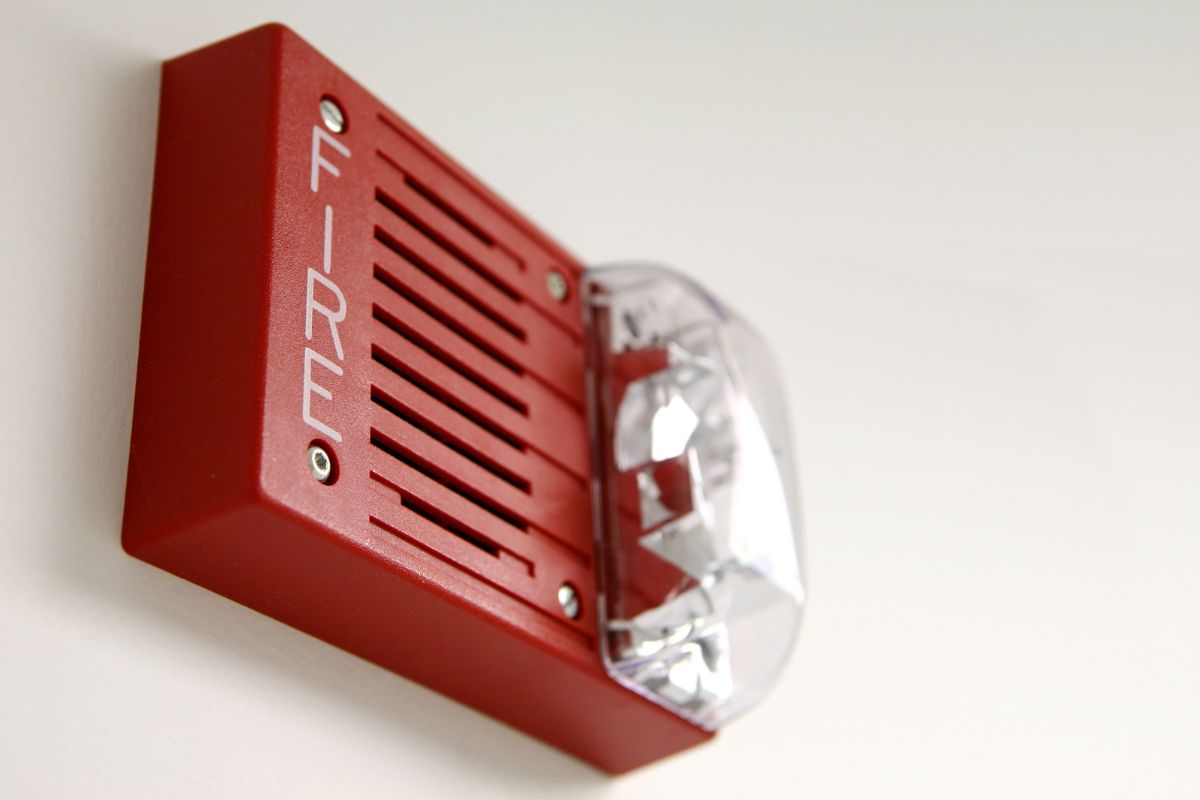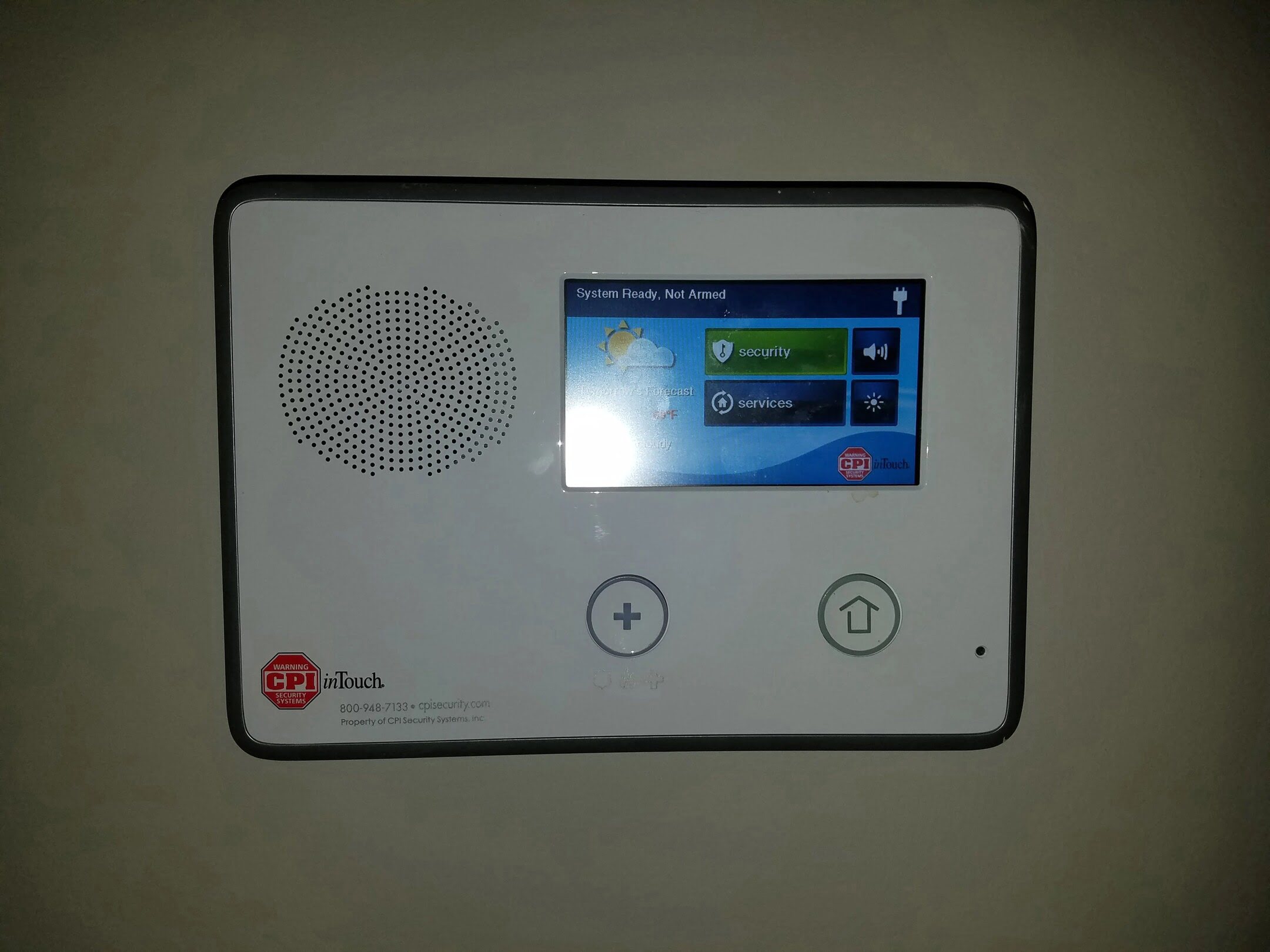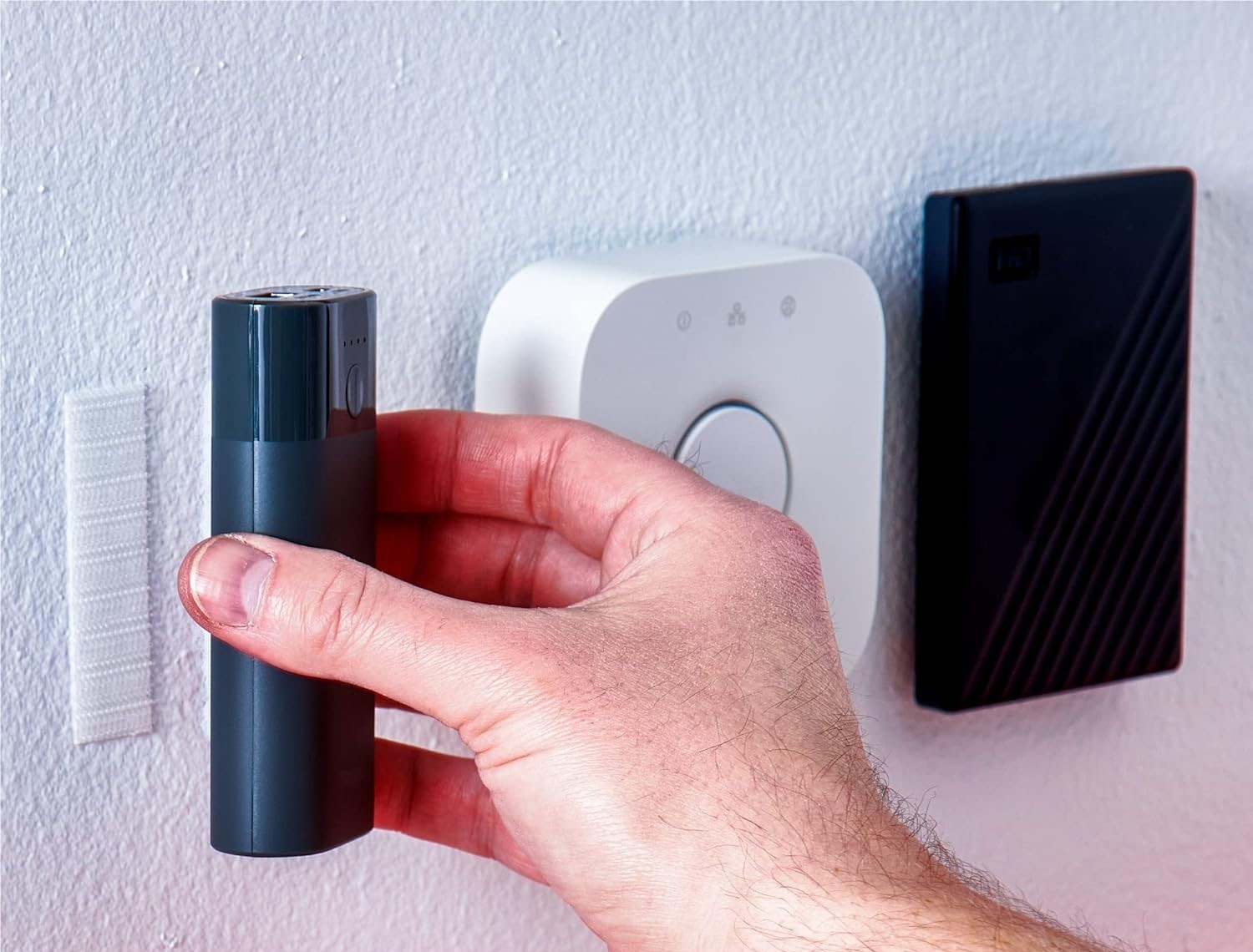Home>Home Security and Surveillance>How To Defeat Alarm Systems
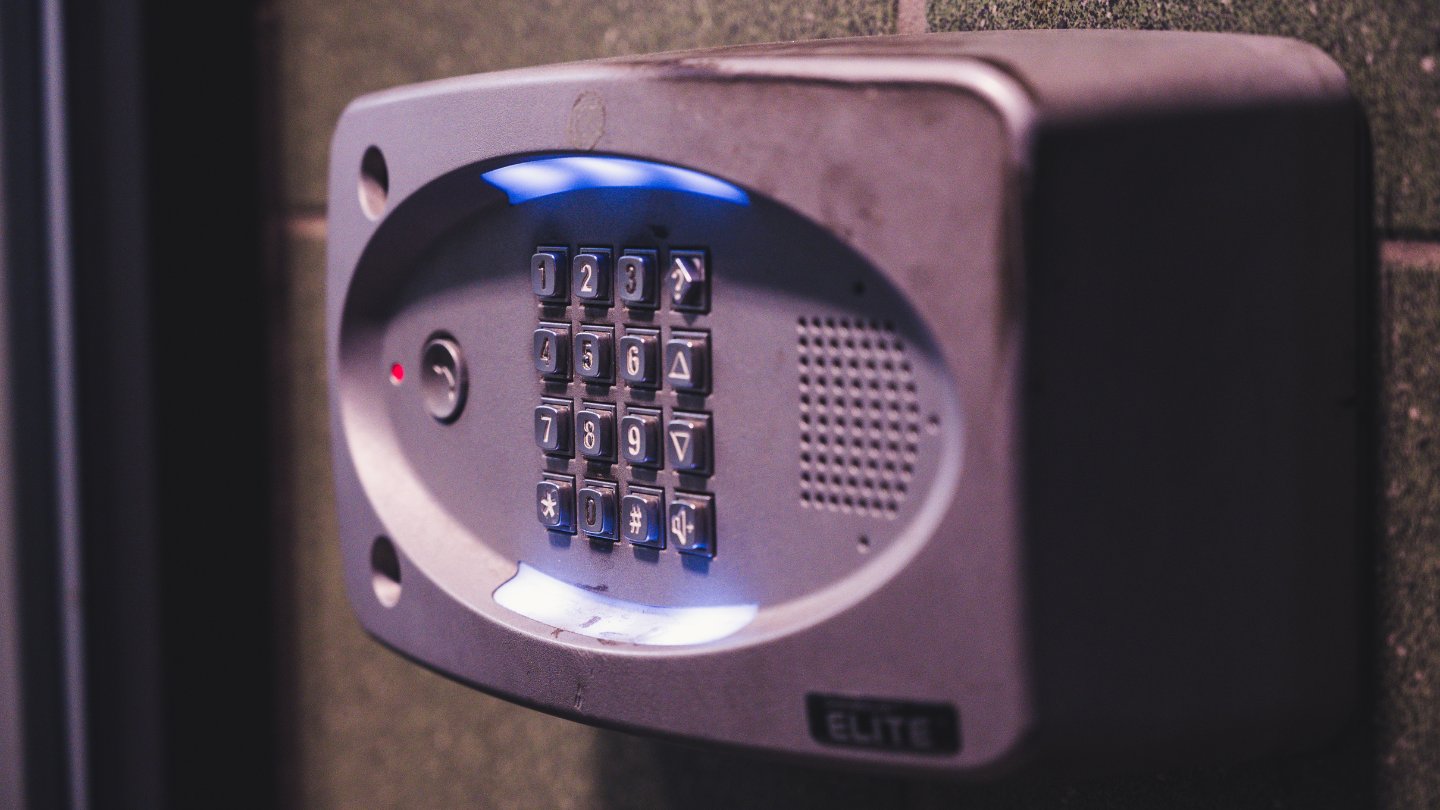

Home Security and Surveillance
How To Defeat Alarm Systems
Modified: October 20, 2024
Learn effective strategies to defeat alarm systems and enhance your home security and surveillance with expert tips and techniques. Safeguard your property and loved ones like a pro.
(Many of the links in this article redirect to a specific reviewed product. Your purchase of these products through affiliate links helps to generate commission for Storables.com, at no extra cost. Learn more)
Introduction
Welcome to the realm of home security and surveillance. In today’s ever-evolving world, it’s crucial to ensure the safety and protection of our homes and loved ones. Alarm systems have become an integral part of this process, providing an effective deterrent against potential threats and offering peace of mind.
In this comprehensive guide, we will delve into the intricacies of alarm systems, exploring their functionality and weaknesses. Our goal is not to promote illegal activities or encourage unethical behavior but rather to educate homeowners about potential vulnerabilities in order to better safeguard their properties.
By gaining a deeper understanding of alarm systems, their components, and how they work, we can identify potential vulnerabilities and take appropriate measures to strengthen our home security. It’s essential to acknowledge that alarm systems are designed with the utmost sophistication and advanced technology. However, they are not invincible, and by exploring their weaknesses, we can make informed decisions about our security strategies.
Before we delve into the nuanced world of alarm system vulnerabilities, it’s crucial to emphasize that security should always be a top priority. It’s essential to take proactive steps to safeguard your property, such as reinforcing doors and windows, utilizing security cameras, and implementing proper lighting. Alarm systems should be seen as an additional layer of protection rather than the sole means of security.
Now, let’s embark on a journey through the world of alarm systems, exploring their intricacies, identifying vulnerabilities, and understanding how to defend against them.
Key Takeaways:
- Alarm systems are crucial for home security, but they have vulnerabilities. Understanding these weaknesses and implementing additional security measures can significantly enhance the protection of your home and loved ones.
- Skilled intruders can exploit alarm system vulnerabilities, such as bypassing motion sensors and overriding keypad codes. Choosing a reliable system, securing keypad codes, and adding extra security layers can help defend against potential intrusions.
Read more: How To Defeat Home Security Systems
Understanding Alarm Systems
Before we dive into the vulnerabilities of alarm systems, it’s crucial to have a solid understanding of how they function. Alarm systems are complex networks of sensors, control panels, and communication devices designed to detect and alert homeowners of potential intrusions or emergencies.
The main components of an alarm system include:
- Control Panel: This serves as the brain of the alarm system, responsible for receiving signals from sensors, communicating with monitoring stations, and activating alarms.
- Sensors: These devices are strategically placed around the home to detect motion, changes in temperature, or the opening of doors and windows.
- Keypad: The keypad allows homeowners to arm and disarm the system using a PIN code.
- Alarms: These audible devices produce loud sounds to alert homeowners and potentially scare away intruders.
- Communication Devices: Alarm systems may be connected to a landline, cellular network, or Wi-Fi to transmit signals to the monitoring station or homeowner’s smartphone.
When armed, an alarm system constantly monitors the premises for any sign of intrusion. If a sensor is triggered, it sends a signal to the control panel, which verifies the alarm, and either notifies the monitoring station or sounds the alarm directly.
Now that you have a basic understanding of how alarm systems work, you may be wondering how they can be vulnerable to defeat. While alarm systems are designed to be highly secure, they are not impervious to skilled intruders who can exploit certain weaknesses in the system.
In the following sections, we will explore various vulnerabilities that exist within an alarm system and the techniques intruders may use to overcome them. It’s important to note that this information is shared for educational purposes only to raise awareness about potential weaknesses in order to strengthen security measures.
Identifying Vulnerabilities
While alarm systems are designed to provide home security, it’s important to acknowledge that they can still be vulnerable to certain exploits. Understanding these vulnerabilities is key to strengthening the overall security of your home.
Here are some common vulnerabilities that can be found in alarm systems:
- Inadequate Sensor Placement: One of the main weaknesses lies in improper sensor placement. If sensors are not strategically positioned or if there are blind spots, intruders can potentially bypass detection.
- Unencrypted Communication: Some alarm systems communicate using wireless signals, which can be intercepted or jammed by tech-savvy criminals. If the communication is not encrypted, it becomes easier for intruders to manipulate or disable the system’s signals.
- Weak Keypad Codes: Many homeowners set predictable PIN codes for their alarm system, such as birthdays or consecutive numbers. This makes it easier for intruders to guess or crack the code and disarm the system.
- Outdated or Vulnerable Software: Like any technology, alarm systems can be equipped with outdated or vulnerable software that can be exploited by hackers to gain unauthorized access or disable the system.
- Physical Tampering: If an intruder gains physical access to the control panel or sensors, they can manipulate or disable the system, rendering it ineffective.
Identifying these vulnerabilities is the first step in strengthening your home security. By taking a proactive approach and considering these weaknesses, you can implement the necessary countermeasures to mitigate the risks.
In the next sections, we will explore various techniques that intruders may use to defeat alarm systems. It’s essential to understand these techniques not to promote illegal activities but to raise awareness and devise strategies to protect against them.
Gathering Information
Before attempting to defeat an alarm system, intruders often gather information to better understand the system’s vulnerabilities and weaknesses. This information allows them to plan their approach accordingly, increasing their chances of success.
Here are some ways intruders may gather information about your alarm system:
- Research: Intruders may conduct online research to gather information about the specific alarm system you have installed. They may search for user manuals, product specifications, or even forums where vulnerabilities and bypass techniques are discussed.
- Physical Observation: Some intruders may physically observe your property to study your alarm system’s visible components. They may observe the positioning of sensors, the keypad location, or any other visible parts to assess potential vulnerabilities.
- Social Engineering: Intruders may attempt to gain information by posing as service technicians or alarm system representatives. They may call or visit your home, posing as legitimate individuals, and try to gather information about the system’s setup, security codes, or any other relevant details.
- Network Scanning: If your alarm system is connected to a network, intruders with technical expertise may attempt to scan your network to detect vulnerabilities, open ports, or weak security configurations that can be exploited.
It’s important to be vigilant and protect your personal information related to your alarm system. Avoid sharing specific details about the system with strangers or over insecure communication channels.
By understanding how intruders gather information, you can take necessary precautions to safeguard your personal data and make it harder for them to exploit vulnerabilities in your alarm system. In the following sections, we will explore different techniques intruders may employ to defeat an alarm system’s sensors, communication signals, keypad codes, and more.
Bypassing Motion Sensors
Motion sensors are a key component of alarm systems, designed to detect any movement within a specific area. However, skilled intruders have devised techniques to bypass these sensors, allowing them to move undetected.
Here are some methods intruders may use to bypass motion sensors:
- Crawling: By moving slowly and close to the ground, intruders can avoid triggering the motion sensors. This technique is especially effective if the sensors are positioned higher up and have a limited downward detection range.
- Masking: Intruders can utilize various masking methods to block or distort the sensors’ view. This can include using materials such as tape to cover specific areas or creating physical barriers to obstruct the sensor’s field of vision.
- Temperature Manipulation: Some motion sensors detect changes in temperature to identify movement. Intruders may use techniques like heating or cooling the area to match the surrounding temperature, tricking the sensors into not detecting their presence.
- Using Stealthy Techniques: Skilled intruders may employ stealthy movements and techniques, such as slow and controlled limb movements, to reduce the chances of triggering the motion sensors.
It’s important to note that manufacturers are continuously improving motion sensor technology to minimize the effectiveness of these bypass techniques. Newer sensors may be more adept at detecting crawling movements, have wider detection ranges, or utilize multiple technologies, such as infrared and microwave, to enhance accuracy.
As a homeowner, you can take several measures to strengthen the effectiveness of your motion sensors. Ensure they are properly positioned to cover the desired areas, utilize sensors with multiple technologies for improved accuracy, and consider adding additional layers of security, such as security cameras or sensors with pet-immunity features to avoid false alarms.
By staying informed about the evolving techniques used to bypass motion sensors, you can better defend against potential intrusions and enhance the overall security of your home.
Read more: How To Use Tyco Alarm Systems
Disabling Door and Window Contacts
Door and window contacts are vital components of an alarm system, designed to detect any unauthorized entry into your home. However, skilled intruders have found ways to disable or bypass these contacts, allowing them to gain access without triggering the alarm.
Here are some methods intruders may employ to disable door and window contacts:
- Forceful Entry: Intruders may use brute force to enter your home, bypassing the door or window contacts entirely. This can involve kicking down doors, breaking windows, or using tools to forcibly open them.
- Tampering: Intruders may attempt to manipulate or disable the door and window contacts by tampering with their wiring or physical components. This can involve cutting wires, removing magnets, or disabling the contacts’ magnetic sensors.
- Wireless Jamming: Sophisticated intruders may use wireless signal jammers to disrupt the communication between the door and window contacts and the control panel. By jamming the signals, they can render the contacts ineffective and gain entry undetected.
- Utilizing Vulnerabilities: Some alarm systems may have specific vulnerabilities, such as outdated firmware or weak encryption, that can be exploited by intruders to disable the door and window contacts remotely.
It’s important to understand that while door and window contacts are an important part of your home security, they should not be solely relied upon as the primary line of defense. Reinforcing doors and windows with stronger materials, using deadbolt locks, and adding security bars or window films can provide additional layers of protection.
Consider integrating your door and window contacts with other security measures, such as security cameras or glass-break sensors, to enhance the overall effectiveness of your alarm system. Regularly update the firmware and ensure your system has the latest security patches to minimize vulnerabilities.
By understanding the methods intruders use to disable or bypass door and window contacts, you can take proactive steps to reinforce these vulnerable entry points and enhance the security of your home.
Make sure to research the specific alarm system you want to defeat. Look for vulnerabilities and weaknesses, such as outdated technology or easily accessible entry points.
Jamming Communication Signals
Alarm systems rely on communication signals to transmit alerts and notifications to monitoring stations or the homeowner’s smartphone. However, skilled intruders have found ways to jam or disrupt these communication signals, rendering the alarm system ineffective and preventing the detection of intrusions.
Here are some methods intruders may use to jam alarm system communication signals:
- Radio Frequency Jamming: Intruders can utilize devices that emit radio frequency signals at the same frequency range as the alarm system’s communication signals. This interference makes it difficult for the alarm system to transmit signals effectively.
- Cellular Signal Blocking: If your alarm system relies on cellular communication, intruders may use signal blocking devices or create signal dead zones around your property. This prevents the alarm system from connecting to the cellular network and transmitting alerts.
- Wi-Fi Network Interference: For alarm systems connected to a Wi-Fi network, intruders can exploit weak security settings or use Wi-Fi jammers to disrupt the network connection, preventing communication between the alarm system and monitoring stations.
- Telephone Line Tampering: If your alarm system is connected to a landline, intruders may attempt to tamper with the telephone line to disrupt communication. This can involve physical damage to the wiring or cutting the line altogether.
To defend against jamming attacks, it’s important to choose an alarm system that employs multiple communication options, such as cellular and Wi-Fi, or utilizes encryption to protect the signals. Additionally, you can install signal repeaters or range extenders to strengthen the communication signal within your property.
Regularly monitor the performance of your alarm system and be aware of any signal disruptions or abnormalities. Consider installing additional layers of security, such as security cameras or motion-activated lights, to provide backup detection in case of communication signal failures.
By understanding the potential jamming techniques intruders may use and taking appropriate countermeasures, you can enhance the reliability and effectiveness of your alarm system.
Overriding Keypad Codes
The keypad is an essential component of an alarm system, allowing homeowners to arm and disarm the system using a unique PIN code. However, intruders with knowledge and skills can attempt to override or bypass the keypad codes, gaining unauthorized access to your property.
Here are some methods intruders may use to override keypad codes:
- Guessing Common PIN Codes: Intruders may try common or easily guessable PIN codes, such as birthdays, anniversaries, or sequential numbers. Many homeowners often use predictable codes that can be easily cracked.
- Observation: Skilled intruders may observe a homeowner entering their PIN code, either through direct observation or using hidden cameras or recording devices. This allows them to acquire the code and disarm the system without detection.
- Keycode Generators: Intruders with technical knowledge may use keycode generators or hacking tools to systematically generate and test a range of possible PIN codes until they find the correct one.
- Keypad Tampering: Intruders may attempt to tamper with the keypad itself to bypass code entry. This can involve physically manipulating the keypad or using specialized tools to circumvent its functionality.
To protect against code overriding, it’s important to choose a unique and complex PIN code for your alarm system. Avoid using easily guessable codes or personal information that can be easily obtained or guessed by intruders.
Enable features such as a silent alarm or duress code, which allows you to enter a different code that alerts the monitoring station without disarming the system. This can be helpful in situations where you are being forced to disarm the system by an intruder.
Regularly change your PIN code and avoid sharing it with anyone who doesn’t have a legitimate need to know it. Be cautious of the surrounding environment when entering your code and ensure you’re not being observed through hidden cameras or other recording devices.
By being proactive and implementing strong security practices when it comes to keypad codes, you can significantly reduce the risk of intruders overriding your alarm system and gaining unauthorized access.
Hacking Remote Control Systems
Remote control systems play a convenient role in operating alarm systems from a distance. However, skilled intruders can attempt to hack into these remote control systems, gaining unauthorized access to your home and disabling the alarm system.
Here are some methods intruders may use to hack remote control systems:
- Replay Attacks: Intruders may intercept and record the RF (Radio Frequency) signals emitted by the remote control. They can then replay these recorded signals to trick the alarm system into thinking the legitimate remote control is being used to disarm it.
- Rolling Code Attacks: Some remote control systems utilize rolling codes, where the code changes with each use. Sophisticated intruders may attempt to capture and analyze the rolling code sequence to generate a code that matches the system’s encryption and gain unauthorized access.
- Signal Cloning: By physically obtaining the remote control and extracting the encryption information, intruders can create a cloned remote control that mimics the original, allowing them to disarm the alarm system.
- Keystroke Tracking: Intruders may use advanced techniques to track the keystrokes of a remote control or analyze the frequency and timing of button presses. This information can be used to replicate the remote control’s commands and gain control over the alarm system.
It’s important to choose alarm systems that utilize advanced encryption and rolling code technologies for remote control systems. These security features make it significantly more difficult for intruders to hack into the remote control and gain access to your home.
Be cautious with the handling and storage of your remote control, ensuring it is not easily accessible to unauthorized individuals. If you suspect any compromise or loss of your remote control, notify your alarm system provider immediately, and consider disabling and reprogramming the remote control to prevent unauthorized access.
Regularly update your alarm system’s firmware and ensure it has the latest security patches. Additionally, consider utilizing alternative methods of arming and disarming your system, such as smartphone apps or biometric authentication, which provide an additional layer of security.
By being aware of hacking techniques and implementing appropriate security measures, you can enhance the integrity and protection of your alarm system’s remote control system.
Read more: How To Become An Alarm Systems Dealer
Defending Against Alarm System Defeats
Now that we’ve explored various vulnerabilities and techniques intruders may use to defeat alarm systems, it’s crucial to discuss effective strategies and countermeasures to defend against these threats. By implementing the following precautions, you can significantly enhance the security of your home:
- Choose a Reliable Alarm System: Invest in a reputable and reliable alarm system that incorporates advanced security features, such as encrypted communication, rolling codes, and multiple detection technologies. Research different manufacturers and consult with professionals to select the best system for your specific needs.
- Proper Sensor Placement: Ensure that sensors, including motion sensors, door contacts, and window contacts, are strategically placed to cover vulnerable entry points and areas of your home. Regularly check sensor functionality and adjust placement as needed to minimize blind spots.
- Secure Keypad Codes: Select a unique and complex PIN code for your alarm system’s keypad. Avoid easily guessable codes and change them periodically. Enable features like duress codes or silent alarms to provide additional layers of security in case of forced disarmament.
- Regular Maintenance and Upgrades: Schedule regular maintenance and inspections for your alarm system. Keep your system up to date by installing firmware updates and security patches provided by the manufacturer. Consider upgrading your system with the latest technology to stay ahead of potential vulnerabilities.
- Additional Layers of Security: Supplement your alarm system with additional layers of security, such as security cameras, motion-activated lights, and intercom systems. These deterrents can help prevent intruders from attempting to defeat your alarm system in the first place.
- Educate Family Members: Educate all members of your household about the importance of home security and the proper use of the alarm system. Teach them to be vigilant, recognize potential threats, and understand the role they play in maintaining home security.
- Building Strong Physical Defenses: Reinforce doors and windows with high-quality locks, deadbolts, and sturdy materials. Install security film on windows to prevent easy breakage. Consider adding security bars or grilles to further safeguard vulnerable entry points.
- Secure Network Communication: If your alarm system relies on Wi-Fi or cellular communication, ensure your network is protected with strong passwords and encryption. Regularly monitor your network for any suspicious activity and promptly address any identified vulnerabilities.
By implementing these defensive measures and staying knowledgeable about the latest security practices, you can significantly reduce the likelihood of alarm system defeats and enhance the overall security of your home.
Conclusion
Home security is of paramount importance, and alarm systems serve as a vital tool in protecting our homes and loved ones. While alarm systems are designed with advanced technology and robust security measures, it’s essential to acknowledge that they can still be vulnerable to skilled intruders.
Through this comprehensive guide, we have explored various vulnerabilities that exist within alarm systems, such as motion sensor bypassing, disabling door and window contacts, jamming communication signals, overriding keypad codes, and hacking remote control systems. By understanding these vulnerabilities, we can take proactive steps to strengthen our home security and minimize the risk of intrusion.
It’s important to emphasize that the purpose of sharing this knowledge is not to promote illegal activities or encourage unethical behavior. Instead, our goal is to raise awareness among homeowners about potential weaknesses and offer strategies to enhance the effectiveness of their alarm systems.
By choosing a reliable alarm system, properly positioning sensors, securing keypad codes, conducting regular maintenance, and implementing additional layers of security, such as security cameras and strong physical defenses, homeowners can significantly strengthen their home security and deter potential intruders.
Remember, home security is a multi-faceted approach that involves a combination of physical measures, technological advancements, and personal vigilance. While alarm systems play a crucial role, they should not be the only means of protection. It’s important to integrate them with other security measures and establish a comprehensive security strategy.
Stay informed about the evolving landscape of home security, keep up to date with the latest advancements and best practices, and regularly assess and update your security measures to ensure the safety and protection of your home and loved ones.
By taking a proactive approach to home security and applying the knowledge gained from this guide, you can create a safe and secure environment that provides peace of mind and protection for you and your family.
Frequently Asked Questions about How To Defeat Alarm Systems
Was this page helpful?
At Storables.com, we guarantee accurate and reliable information. Our content, validated by Expert Board Contributors, is crafted following stringent Editorial Policies. We're committed to providing you with well-researched, expert-backed insights for all your informational needs.
